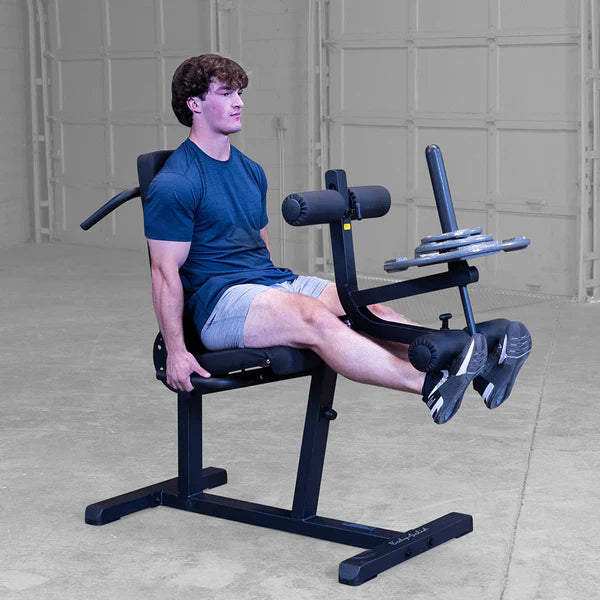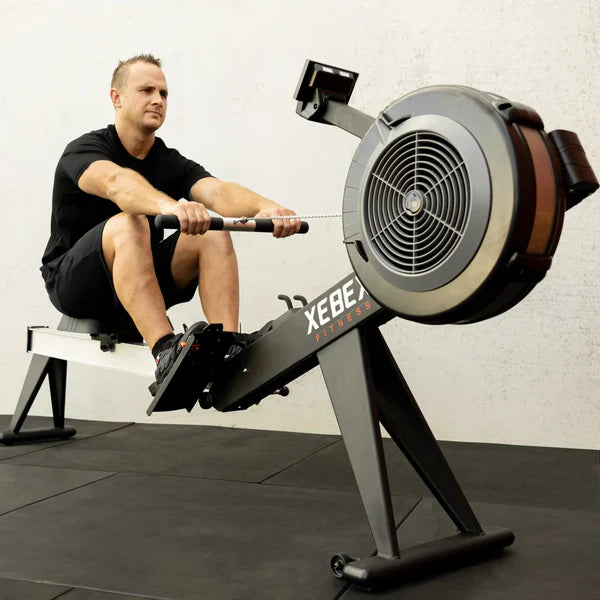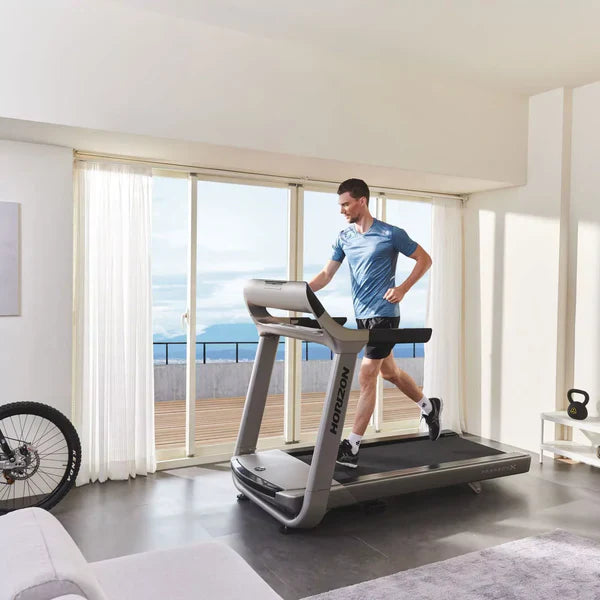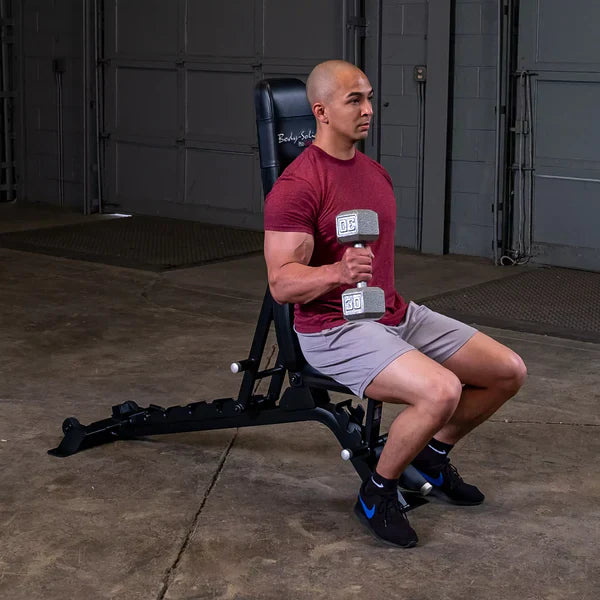When building a home gym, most people focus on essentials like dumbbells, resistance bands, and perhaps a treadmill or stationary bike. But one often-overlooked piece of equipment can take your leg training to the next level: the leg extension machine. Adding a leg extension to your setup not only enhances your lower-body strength but also makes your home gym more versatile. If you’ve been searching for the best leg extension for home gym, this guide will help you understand why it’s worth the investment and how to maximize your results.
What Is a Leg Extension?
The leg extension is a strength-training exercise performed using a dedicated leg extension machine. The movement isolates the quadriceps—the muscles located on the front of your thighs—by having you sit and extend your legs against resistance. Unlike compound movements such as squats or lunges, which recruit multiple muscles, the leg extension is an isolation exercise designed to specifically target and strengthen the quads.
Leg Extension Benefits
Before investing in new gym equipment, it’s worth understanding what makes the exercise so effective. Here are the top leg extension benefits:
1. Quad Isolation
Most lower-body exercises like squats, deadlifts, or step-ups engage several muscle groups at once. While that’s fantastic for overall strength, it doesn’t allow for targeted development. A leg extension focuses directly on the quadriceps, making it one of the best exercises to build muscle size and definition in your thighs.
2. Joint Health and Stability
Strengthening your quadriceps can help support the knee joint. A strong set of quads stabilizes your knees, reducing the risk of injury both during workouts and in everyday activities like walking, running, or climbing stairs.
3. Injury Recovery and Rehab
Many physiotherapists use leg extensions as part of rehabilitation programs for knee injuries. Because the exercise isolates the quads, it’s an excellent way to rebuild strength in a controlled, seated position without placing excessive stress on other joints.
4. Muscle Definition and Aesthetics
If one of your goals is to build lean, muscular legs, leg extensions help create that “sweeping” quad look often seen in athletes and bodybuilders. They complement compound movements, making your legs both stronger and more defined.
5. Easy to Perform at Any Fitness Level
Unlike squats or lunges, which require balance, form, and coordination, leg extensions are straightforward. This makes them an excellent choice for beginners who want to strengthen their legs safely, while still being challenging for advanced lifters who increase resistance.
Why Add a Leg Extension to Your Home Gym?
If you already own free weights, resistance bands, and maybe even a squat rack, you might wonder whether a leg extension is worth the extra space. The answer is yes—and here’s why:
Complements Compound Movements
Squats, deadlifts, and lunges are fantastic, but they don’t fully isolate the quadriceps. Having a dedicated leg extension machine allows you to focus on this specific muscle group, ensuring balanced leg development.
Small Footprint Options
Modern fitness brands now offer compact machines that fit comfortably in a home gym without taking up as much space as commercial-grade equipment. Many machines also combine leg extension and leg curl functionality, giving you two exercises in one unit.
Versatile Training Routines
Whether you want to focus on strength, hypertrophy (muscle growth), or rehabilitation, a leg extension machine gives you flexibility. You can adjust the weight, sets, and reps to match your goals, making it a long-term investment in your fitness.
Professional-Level Results at Home
Adding a leg extension to your home gym setup brings the quality of a commercial gym to your personal space. You’ll no longer need to compromise on quad training just because you’ve ditched the gym membership.
Best Leg Extension for Home Gym: What to Look For
When searching for the best leg extension for home gym, keep these factors in mind:
-
Size and Space – Measure your gym area before purchasing. Many home-friendly options are compact and can be folded or adjusted when not in use.
-
Weight Options – Decide whether you prefer a machine that uses weight plates you already own or one with a built-in weight stack.
-
Durability – Look for a machine made with sturdy steel construction and comfortable padding for long-term use.
-
Adjustability – Ensure the machine allows seat and back adjustments to accommodate different body sizes and exercise angles.
-
Combination Machines – If space is limited, consider a machine that combines leg extensions and leg curls for added versatility.
Some popular brands offering great home gym models include Body-Solid, Titan Fitness, and Marcy. Each offers different options depending on your budget and space.
Leg Extension Workout Routine at Home
Once you’ve got your machine set up, it’s time to create a leg extension workout routine at home. Here are some effective programming ideas depending on your goals:
Beginner Routine
-
Warm-Up: 5–10 minutes of light cardio
-
Leg Extension: 3 sets of 12–15 reps (light to moderate weight)
-
Complementary Exercises: Bodyweight squats and glute bridges
Intermediate Routine
-
Warm-Up: Dynamic stretches and light cycling
-
Leg Extension: 4 sets of 10–12 reps (progressively increase resistance)
-
Pair with: Dumbbell lunges and Romanian deadlifts
Advanced Routine
-
Warm-Up: Foam rolling and mobility drills
-
Leg Extension: 5 sets of 8–10 reps (heavy resistance)
-
Superset with: Barbell squats or Bulgarian split squats
-
Finisher: Drop set—perform leg extensions at heavy weight, then immediately reduce the weight and continue until failure
Rehab or Low-Impact Routine (with professional guidance)
-
Light Warm-Up: Walking or cycling
-
Leg Extension: 3–4 sets of 15–20 reps (very light weight)
-
Focus on controlled tempo and range of motion
Tips for Getting the Most Out of Leg Extensions
-
Use Proper Form: Sit with your back flat against the pad, adjust the machine so the pad rests just above your ankles, and extend your legs smoothly without jerking.
-
Control the Movement: Avoid letting the weight drop too quickly; control both the lift and the lowering phase for maximum benefit.
-
Don’t Overload: More weight doesn’t always mean better results. Start with manageable resistance and gradually increase.
-
Incorporate Variety: Mix up your workout routine with squats, lunges, and leg presses to ensure balanced leg development.
Final Thoughts
Adding a leg extension machine to your home gym can be a game-changer. From leg extension benefits like quad isolation, improved knee stability, and enhanced aesthetics to the convenience of a leg extension workout routine at home, this piece of equipment is both practical and powerful.
When choosing the best leg extension for home gym, focus on quality, adjustability, and space efficiency. Once you integrate it into your fitness routine, you’ll quickly see why this simple yet effective machine is a favorite among athletes, bodybuilders, and fitness enthusiasts alike.
If your goal is to take your leg training to the next level, strengthen your quads, and bring gym-quality results into your home, investing in a leg extension machine is one of the smartest moves you can make.





